[NUC] BIOS Update and Recovery Instructions for NUC Compute Element
| Note |
BIOS Update Instructions for NUC Compute Elements (PDF) Note: PDF files require Adobe Acrobat Reader*
|
After any BIOS update, ASUS recommends the following steps:
- Press F2 during the start to enter BIOS Setup.
- Press F9 to set BIOS default values.
- Customize any BIOS settings, if desired (optional).
- Press F10 to save and exit BIOS Setup.
Click or the method for details:
Express BIOS Update
Download and save the Express BIOS update file (.EBU.exe) to a temporary directory on the target computer. Example:
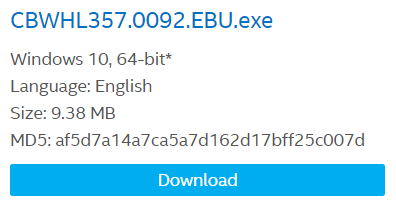
Double-click the *.EBU.exe file to run the Express BIOS update. 
- A command dialog appears. Press Y to restart the computer and start the update.

- Wait 2-5 minutes for the update to complete.
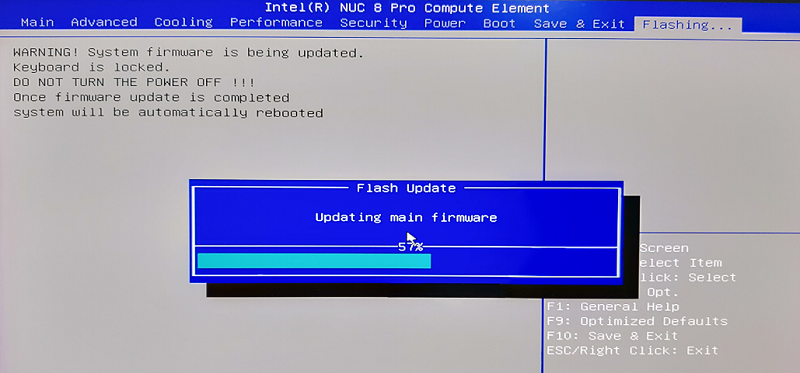
- When the BIOS update is complete, the computer will boot back into Windows
F7 Update
The F7 BIOS Flash Update allows you to update the system BIOS during the boot process and before the operating system loads.
- Download and save the Recovery BIOS capsule (.cap) file to a USB device. Example:
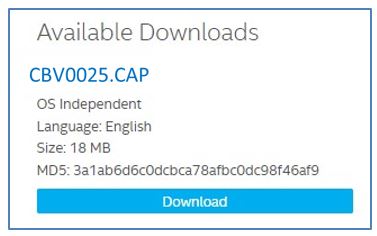
- Plug the USB device into a USB port of the target computer
- Start the NUC. During boot, when the F7 prompt is displayed, press F7 to enter the BIOS Flash Update tool.
- Select the USB device and press Enter.
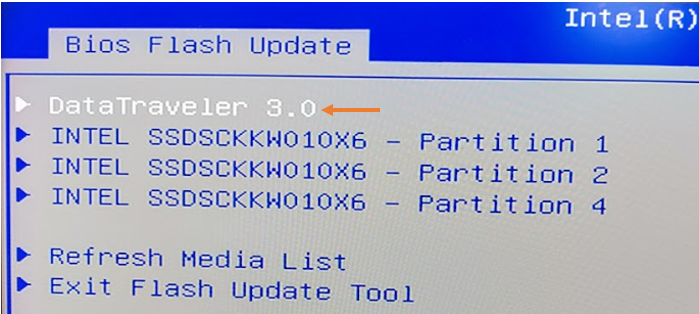
- Select the .cap file and press Enter
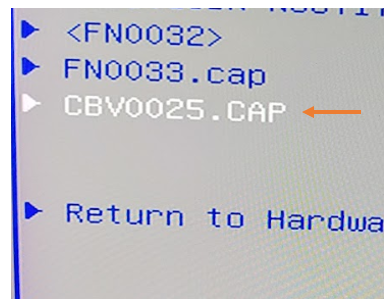
- Confirm you want to update the BIOS by pressing Enter.

- Wait 2-5 minutes for the update to complete.

- When the BIOS update is complete, the computer will boot back into Windows.
Power Button Menu Update
The Power Button Menu Update allows you to update the NUC Compute Elements BIOS during the start process and before the operating system loads.
- Download and save the Recovery BIOS (.cap) file to a USB device. Example:

- Plug the USB device into a USB port of the NUC when it is turned off (not in Hibernate or Sleep mode.
- Press the power button and hold it down for three seconds, then release it before the 4-second shutdown override. The Power Button Menu appears. (Options on the menu can vary, depending on the NUC model.)
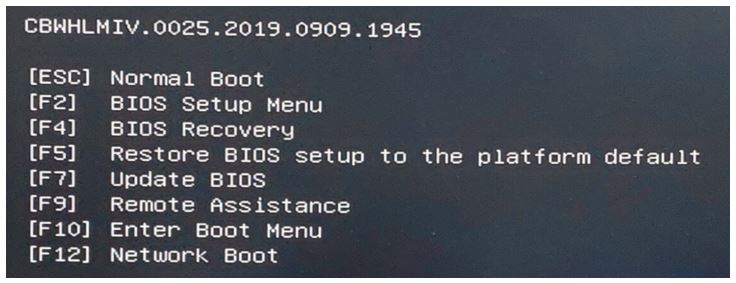
- Press F7 to start the update.
- Wait 2-5 minutes for the update to complete.

- When the BIOS update is complete, the computer will boot back into Windows.
UEFI Shell Update
The UEFI Flash BIOS update utility allows you to update the BIOS from the EFI Shell.
- Download the UEFI Flash BIOS Update file (*.UEFI.zip). Example:
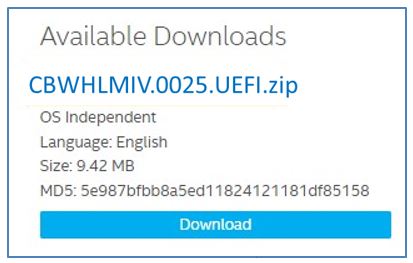
- Double-click the *.UEFI.zip to extract its files

- Copy the iFlashVEfi64.efi and the .cap files to a USB device.
- Connect the USB drive to a port on the NUC.
- Configure the BIOS of the target computer to boot to the EFI Shell:
- Press F2 during the start to enter the BIOS setup.
- Go to Boot > Secure Boot.
- Disable Secure Boot, if enabled.
- Go to Boot > Boot Priority.
- Enable Internal UEFI Shell.
- Press F10 to save changes and exit BIOS Setup.
- Press F10 during boot to open the Boot Menu.
- Select UEFI: Built-in EFI Shell.
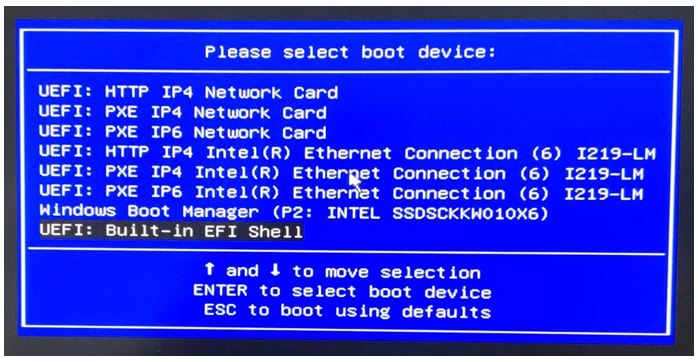
- Change the current directory to the USB flash drive by entering the command fsX: where X is the drive number of the USB flash drive from the device mapping list. For example: if your USB drive is fs0, then type fs0: and press Enter.
- At the command prompt, type iFlashVEfi64.efi XXX.cap /q /jbc, where XXX.cap is the filename of the .cap file and press Enter.

- Press Y to begin the update.
- Wait for the BIOS update to complete.

- The computer will restart when finished.
- Set the BIOS back to original settings:
- Restart the computer.
- Press F2 during the start to enter the BIOS setup.
- Go to Boot > Boot Priority.
- Disable Internal UEFI Shell.
- Go to Boot > Secure Boot.
- Enable Secure Boot, if it was originally enabled.
- Press F10 to save changes and exit BIOS Setup.
Bios Recovery - Power Button Menu
BIOS Recovery by the Power Button Menu
- Download and save the Recovery BIOS file to a USB device. Example:
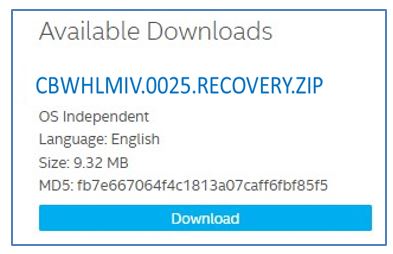
- Copy the recovery file (*.cap) to a USB device.
- Plug the device into a USB port of the target computer when it is turned OFF.
- Press and hold the power button down for 3 seconds, then release it. The Power Button menu appears.

- Press F4 to start the BIOS recovery.
- Wait 2-5 minutes for the recovery process to complete.
- The computer will either turn off when the recovery process is complete, or it will prompt you to turn it off.
- Remove the USB device.
- Restart the computer.
Bios Recovery - Security Switch
| Note | BIOS recovery using the BIOS security jumper will clear Trusted Platform Module (TPM) keys, Platform Trust Technology (PTT) keys, and High-bandwidth Digital Content Protection (HDCP) keys. These keys will not be restored after the BIOS recovery. |
- Download and save the Recovery BIOS (.cap) file to a USB device. Example:

- Copy the recovery file (*.cap) to a USB device.
- Shut down the computer and unplug the AC power adapter.
- Open the chassis and move the switch on the NUC Compute Element to the “Recovery” position as in the picture below. (See the Product Specification for details including the switch settings and configuration.)
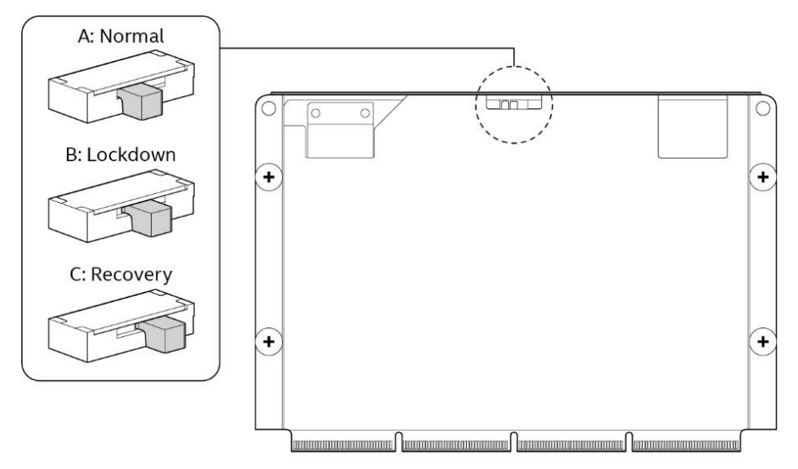
- Plug the USB device into a USB port of the target computer and turn it on.
- Wait 2-5 minutes for the recovery process to complete.
- The computer will either turn off when the recovery process is complete, or it will prompt you to turn it off.
- Remove the USB device.
- Move the switch to the "Normal" position.
- Close the chassis.
- Restart the computer.





